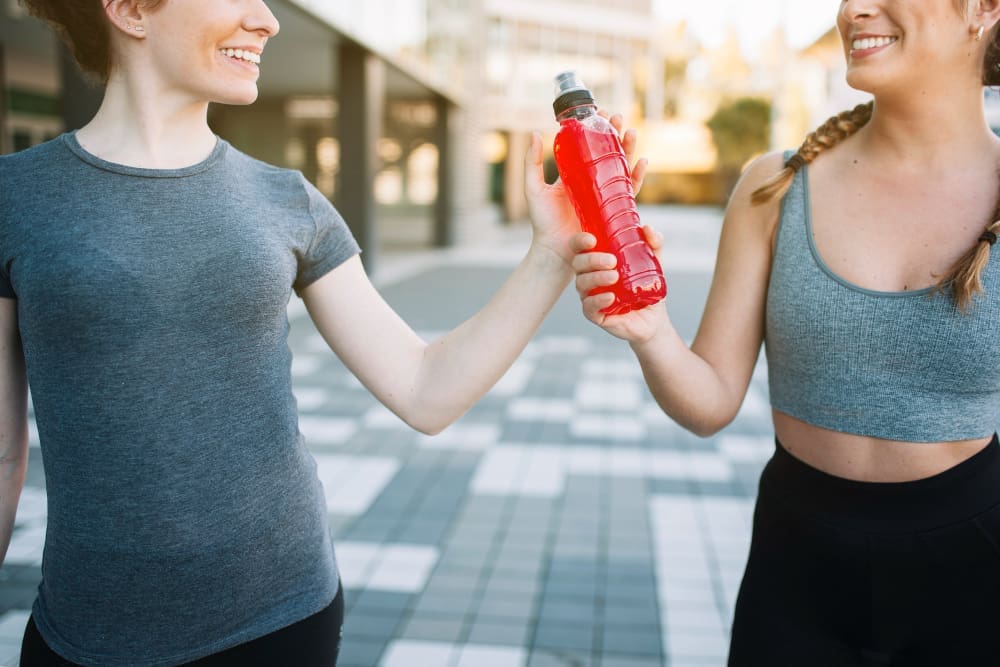For any runner pushing their limits, proper hydration is non-negotiable, but a successful strategy involves more than just water. Electrolyte drinks are essential tools designed to help runners replace vital minerals lost through sweat, primarily sodium, potassium, and magnesium. These specialized beverages are most critical during runs lasting longer than 60 to 90 minutes, in hot or humid conditions, or for individuals who are heavy or “salty” sweaters. By maintaining proper fluid balance, supporting nerve function, and preventing debilitating muscle cramps, the right electrolyte drink can be the key to unlocking better performance, preventing dehydration-related issues like hyponatremia, and ensuring a faster, more effective recovery.
What Are Electrolytes and Why Do Runners Need Them?
At its core, an electrolyte is a mineral that carries an electric charge when dissolved in a fluid, such as water. In the human body, these charged minerals are fundamental to our most basic physiological processes. They are the unsung heroes working behind the scenes of every stride you take.
The primary electrolytes relevant to athletic performance include sodium, potassium, magnesium, calcium, and chloride. Each plays a distinct, critical role. Sodium is the master regulator of fluid balance, helping your body retain the water you drink, while also being crucial for muscle contractions and nerve impulses.
When you run, your body’s primary cooling mechanism is sweating. While sweat is mostly water, it is also packed with these essential electrolytes, with sodium and chloride being lost in the highest concentrations. Losing them without replacement is what leads to performance decline and health risks.
Failing to replace these lost minerals can lead to a cascade of negative effects. The most common are muscle cramps, which occur when nerve signals to muscles misfire due to electrolyte imbalances. More seriously, significant fluid and sodium loss can lead to dehydration and a dangerous condition known as hyponatremia, where the concentration of sodium in your blood becomes abnormally low from drinking too much plain water without adequate electrolyte replacement.
Choosing the Right Electrolyte Drink: A Runner’s Guide
The sports drink aisle can be overwhelming, with a dizzying array of powders, tablets, and pre-mixed beverages all promising to boost your performance. To make an informed choice, you need to understand the key components that make an electrolyte drink effective for a runner’s specific needs.
The Big Three: Sodium, Potassium, and Magnesium
When evaluating a product, the nutrition label is your best friend. The first thing to look for is the sodium content. As the electrolyte lost in the greatest quantity, it’s the most important one to replace. A good starting point for a sports drink used during long runs is one that provides at least 200-400 milligrams of sodium per serving.
Potassium is the next most important player, working in tandem with sodium to manage fluid balance and prevent muscle cramping. Look for a drink that contains a solid dose of potassium, often in the range of 50-200 milligrams per serving.
Magnesium and calcium are lost in smaller amounts but are still vital for muscle function and energy metabolism. While not as critical as sodium in the immediate term, their inclusion in an electrolyte formula is a sign of a well-rounded product designed for comprehensive recovery and performance.
The Role of Carbohydrates (and Sugar)
Many electrolyte drinks also contain carbohydrates, typically in the form of sugar. This isn’t just to make them taste good; carbohydrates play a dual role. First, they provide a source of readily available energy, which is crucial for fueling muscles during runs that extend beyond the 90-minute mark.
Second, a specific combination of glucose (a simple sugar) and sodium has been scientifically shown to accelerate the rate at which your body absorbs water and electrolytes. This is known as the sodium-glucose cotransport system. In simple terms, the sugar acts as a key that unlocks the door for faster hydration.
The concentration of carbohydrates determines the type of drink:
- Hypotonic: These have a lower concentration of carbs and electrolytes than your body. They are designed for rapid hydration and are best for shorter runs or when fluid replacement is the top priority over fuel. Electrolyte tablets that dissolve in water often fall into this category.
- Isotonic: These have a similar concentration to your body’s fluids. They offer a good balance between hydration and energy delivery, making them the go-to choice for most long-distance runners during their training and races.
- Hypertonic: These have a higher concentration and are typically used as recovery drinks or meal replacements. They are absorbed more slowly and prioritize delivering calories over rapid hydration.
When Should You Reach for an Electrolyte Drink?
Timing is everything. Using an electrolyte drink when it isn’t needed can be a waste of money and add unnecessary sugar to your diet. Conversely, waiting too long to use one can derail your run or race.
Before Your Run
For most daily runs under an hour, plain water is sufficient. However, if you are heading out for a very long run (2+ hours) or preparing for a race in hot and humid conditions, “pre-loading” with an electrolyte drink 1-2 hours beforehand can be beneficial. This helps ensure you start the run fully hydrated and with your electrolyte stores topped off.
During Your Run
This is the most common and critical time to use an electrolyte drink. The general rule of thumb is to start sipping on one for any run that will last longer than 60 minutes, and it becomes essential for runs over 90 minutes. Don’t wait until you feel thirsty; thirst is a delayed signal that dehydration is already underway. Aim to drink small, consistent amounts every 15-20 minutes.
After Your Run
Rehydration is a key component of recovery. After a long or particularly sweaty run, an electrolyte drink can help you rebalance your fluid levels more effectively than plain water. Pairing it with a post-run snack or meal that contains protein and carbohydrates will kickstart the muscle repair process and replenish your energy stores for your next session.
Exploring Your Options: Powders, Tablets, and DIY
The modern market offers a variety of formats to suit every runner’s preference and logistical needs.
Ready-to-Drink Bottles
These are the ultimate convenience. Found in every convenience store, classic sports drinks are easy to grab and go. The downside is that they are often high in sugar and artificial ingredients, and they can be bulky to carry on a run.
Powders and Tablets
This is the most popular category among serious runners. Powders and effervescent tablets are lightweight, portable, and allow you to customize the concentration to your personal needs. You can mix a bottle before you leave or carry a small packet to mix with water at an aid station. Brands in this space often offer low-sugar or zero-sugar options for those focused purely on hydration without the extra calories.
DIY Homebrew
For the runner who prefers a minimalist or budget-friendly approach, making your own electrolyte drink is surprisingly simple. A basic and effective recipe involves mixing water with a pinch of salt (for sodium), a small amount of maple syrup or honey (for glucose), and a splash of citrus juice like lemon or orange (for potassium and flavor). This allows you to control every ingredient and tailor the taste and concentration perfectly.
A sample recipe:
- 20 ounces of water
- 1/4 teaspoon of table salt (sodium chloride)
- 1-2 tablespoons of maple syrup, honey, or sugar
- 1/4 cup of orange or lemon juice
Shake well and adjust the ingredients to your taste and needs.
Final Thoughts: Listen to Your Body
Ultimately, the best electrolyte drink for you is one that you enjoy, that sits well in your stomach, and that meets your individual needs. Sweat rate and sweat-sodium concentration vary dramatically from person to person. The golden rule of running—nothing new on race day—applies especially to your hydration and fueling strategy. Use your long training runs to experiment with different products, flavors, and concentrations to discover what helps you feel and perform your best. By strategically incorporating electrolyte drinks into your routine, you are not just hydrating; you are investing in your performance, your health, and your longevity as a runner.







